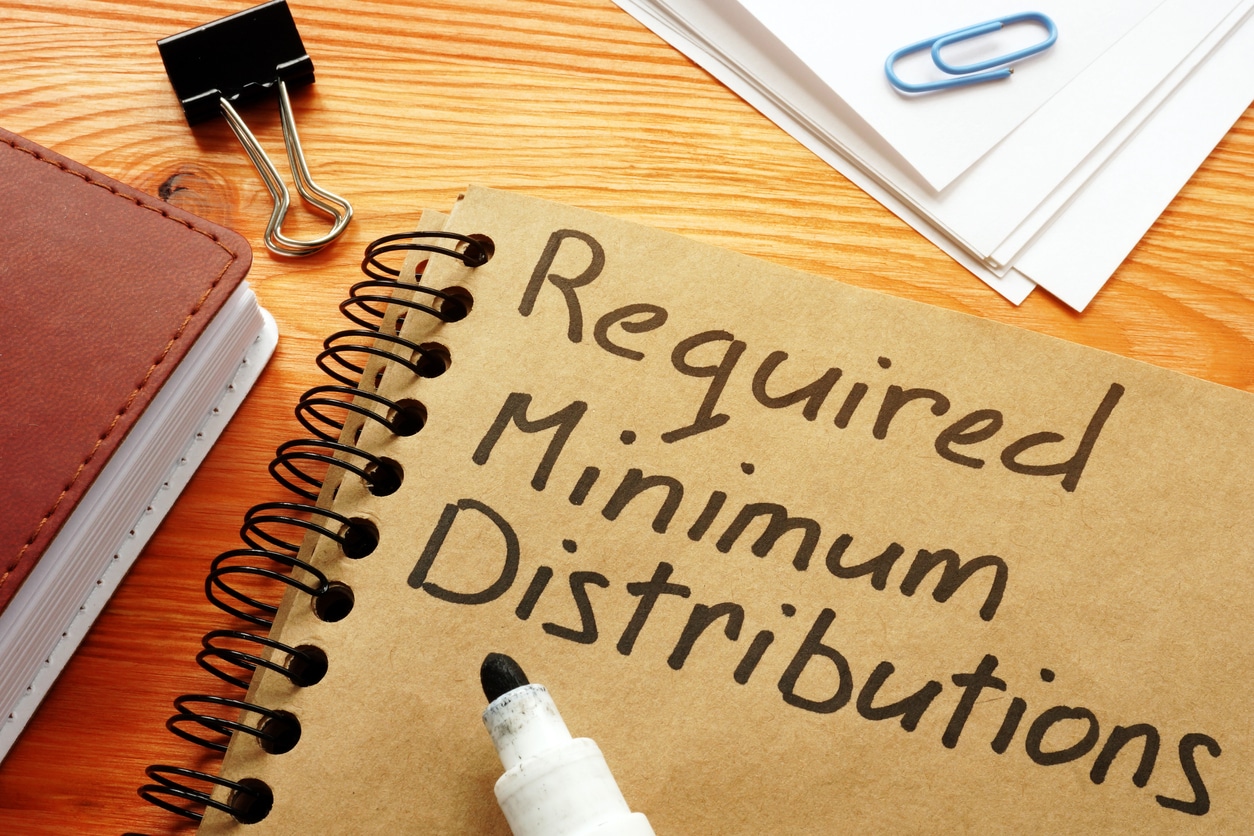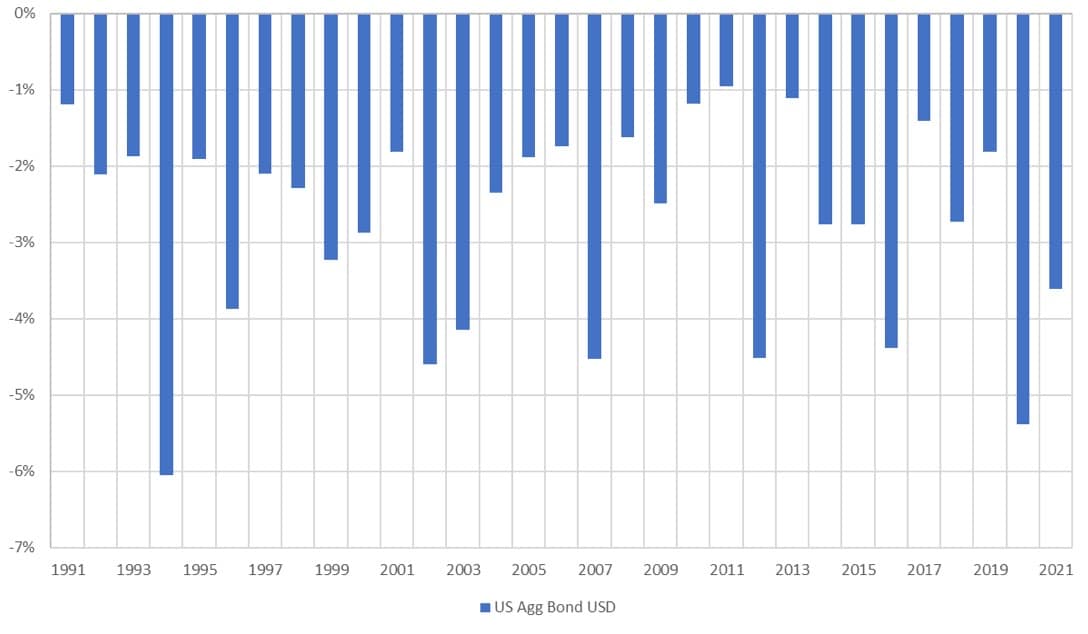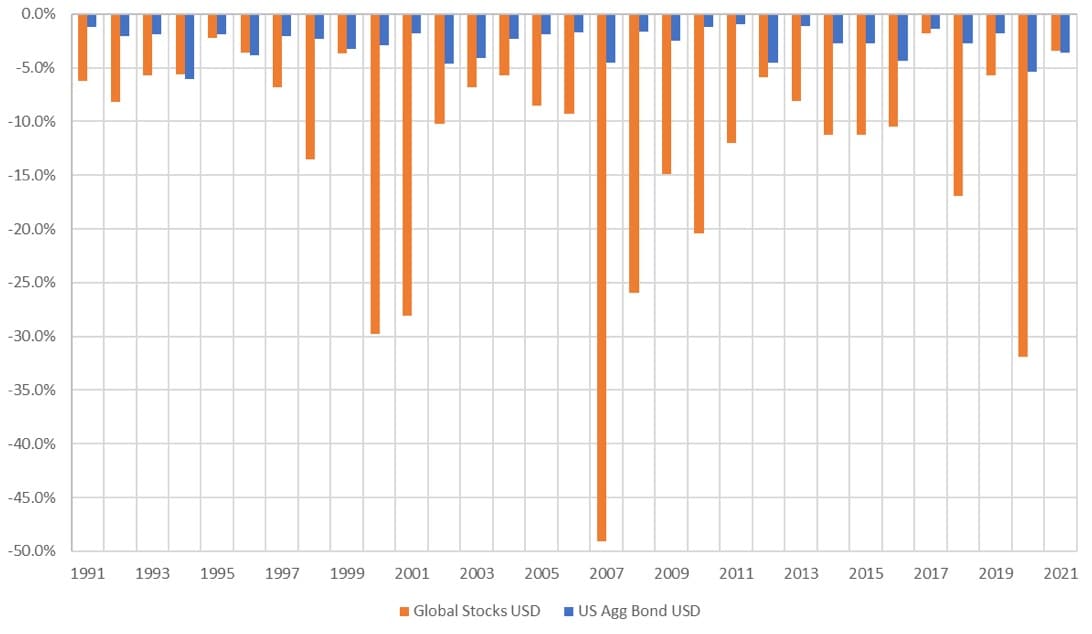There has been a lot of confusion regarding the U.S. minimum distribution rules, so this blog will serve as a written chronicle based on the current and proposed rules as of October 13, 2022.
Background
At a high level, the minimum distribution rules require you as the plan participant to begin taking minimum distributions when you attain the age of 70 ½, assuming you reached age 70 ½ by December 31, 2019. If you reached age 70 ½ after that date, you would instead begin required minimum distributions (RMDs) at age 72.

Summary and Takeaways
RMDs apply to assets of yours held in IRA, 403(b), SEP, SIMPLE, or 457 plan. They also apply to Roth accounts in 401(k), 403(b), and 457 plans, and inherited Roth IRAs. You’re required to start taking required minimum distributions (RMDs) at age 70 ½, if you reached that before 2020. Otherwise you must start RMDs at age 72.
As the Key Takeaways highlight, the rules can be complex and confusing, but failing to follow them can cost you penalties. That’s why this comprehensive blog outlines them for you in greater detail.
Key Takeaways
- You may take more than the RMD without penalty.
- How RMDs are calculated changes as you age, year by year.
- Failing to follow the age rules can make you liable for a 50% excise tax
- Your first RMD must be taken by a specific date, but there is an exception to this rule if you are still employed – and that rule also has complex parts and caveats
- Calculating your RMD can be a complicated process, and has its own exception to the standard calculation method
- Minimum distributions are still required after you die, with certain options available.
If you were already receiving RMDs as of December 31, 2019, you would continue on your current RMD schedule, increased by 1 each year for your increase in age. As an example, if you are age 75 on December 31, 2021, you will be age 76 on December 31, 2022, so you will use age 76 to calculate your 2022 RMD.
The minimum distribution rules are important, as if the RMD is not distributed by the required date, a 50% excise tax will be charged when you file your personal tax return. This penalty is based on the amount of the RMD, less any distribution that was taken during the year.
In all cases, you can decide to take more than your annual RMD without penalty.
RMDs apply to assets in a qualified plan, IRA, 403(b), SEP, SIMPLE, or 457 plan. RMDs do not apply to Roth IRAs during the owner’s lifetime; however, RMDs do apply to Roth accounts in a 401(k), 403(b), and 457 plan, as well as to inherited Roth IRAs.
Your first RMD must be taken by April 1st of the year following the year you attain age 72 (assuming you reached age 70 ½ after December 31, 2019). For each year thereafter, the RMD must be taken by December 31st. If you delay taking your first RMD until April 1st of the year following the year you reached age 72, your second RMD must still be taken by December 31st of that same year. Thus, you receive, and are therefore taxed on, two RMDs in that same year.
There is an exception to taking RMDs from qualified plans if you reach age 72 and are still employed by the plan sponsor of your qualified plan. In this case, you must take your first RMD by April 1st of the year following the year you cease employment with the plan sponsor of your qualified plan. This exception is not available to anyone who owns greater than 5% of the equity of the plan sponsor in the year they reach age 72.
Calculating Your RMD
The amount of your RMD is calculated each year by dividing the account balance as of the end of day on December 31st of the year preceding the distribution year by the distributed period determined according to your age as of December 31st of the distribution year from the Uniform Lifetime Table. The Uniform Lifetime Table can be found here.
The only exception to the Uniform Lifetime Table is if the sole designated beneficiary of your plan is your spouse and that spouse is more than 10 years younger than you. In this case, you can use the Joint Life Expectancy Table to calculate the RMD, which will result in a longer life expectancy, and therefore lower RMD amounts each year in comparison to the Uniform Lifetime Table.
As an example, Paul turned age 72 last year in 2021, and Paul’s spouse is within 10 years of his age. Therefore, Paul will be age 73 by December 31, 2022, and must use the Uniform Lifetime Table to calculate his 2022 RMD. Paul’s IRA balance was $1,000,000 as of December 31, 2021. In calculating Paul’s 2022 RMD, Paul uses age 73 (his age on December 31, 2022), which corresponds to a 26.5 distribution period per the Uniform Lifetime Table, and Paul will need to take an RMD of $1,000,000 / 26.5 = $37,735.85 by December 31, 2022, or else be charged a $37,735.85 @ 50% = $18,867.93 excise tax on his 2022 personal tax return.
Minimum Distributions for Inherited Accounts (Death Before January 1, 2020)
Minimum distributions are still required to be taken after you die. In the year of death, the RMD is calculated as it normally would be, and if you have not already received the RMD in the year of death, the RMD is instead paid to the beneficiary(ies) of your plan. After the year of death, there are different options available depending on who the beneficiary is, and if you die before or after RMDs began (RMDs would have already started if you reached age 70 ½ before January 1, 2020). These options are summarized below for those that have died before January 1, 2020:
|
Options After RMDs Begin (Death Before January 1, 2020) |
|
|
Spouse beneficiary |
1. Distribute over the spouse’s remaining single life expectancy.
2. Roll over the plan balance to an IRA in the spouse’s name, and delay distributions until the spouse reaches age 72 (assuming spouse is not already age 70 ½ on December 31, 2019). The spouse then makes distributions based on their own single life expectancy. |
|
Non-spouse beneficiary |
1. Distribute over the longer of:
2. Roll over the plan balance to an IRA in the non-spouse beneficiary’s name, and make distributions based on the longer of:
|
|
No stated beneficiary |
1. Distribute over the deceased’s remaining single life expectancy. |
|
Options Before RMDs Begin (Death Before January 1, 2020) |
|
|
Spouse beneficiary |
1. Distribute over the deceased’s remaining single life expectancy.
2. Distribute within five years. 3. Roll over the plan balance to an IRA in the spouse’s name, and delay distributions until the spouse reaches age 72 (assuming spouse is not already age 70 ½ on December 31, 2019). The spouse then makes distributions based on their own single life expectancy. |
|
Non-spouse beneficiary |
1. Distribute within five years.
2. Distribute over the remaining single life expectancy of the non-spouse beneficiary. 3. Roll over the plan balance to an IRA in the non-spouse beneficiary’s name, and delay distributions until the non-spouse beneficiary reaches age 72 (assuming non-spouse beneficiary is not already age 70 ½ on December 31, 2019). The non-spouse beneficiary then makes distributions based on their own single life expectancy. |
|
No stated beneficiary |
1. Distribute within five years. |
Minimum Distributions for Inherited Accounts (Death After December 31, 2019)
The Setting Every Community Up for Retirement Enhancement Act (“SECURE Act”) originally passed the House in July 2019 and was approved by the Senate on December 19, 2019. The SECURE Act completely changed the RMD rules for inherited accounts, as all RMDs after death now follow the same rules regardless of whether RMDs had already started or not. The RMD rules changed under the SECURE Act and now depend on the type of beneficiary.
|
Types of Beneficiaries under the SECURE Act (Death After December 31, 2019) |
||
|
Eligible Designated Beneficiary |
Designated Beneficiary |
Nondesignated Beneficiary (also includes a stated estate, charity, and trust beneficiary) |
|
Distribute over the remaining single life expectancy of the Eligible Designated Beneficiary. If the Eligible Designated Beneficiary is a spouse, roll over the plan balance to an IRA in the spouse’s name, and delay distributions until the spouse reaches age 72. The spouse then makes distributions based on their own single life expectancy. If the Eligible Designated Beneficiary is a minor child, the child becomes a Designated Beneficiary when they reach the age of majority. |
Distribute within 10 years.** |
If RMDs have already started, distribute over the deceased’s remaining single life expectancy. If RMDs have not already started, distribute within five years. |
You can list a beneficiary(ies) of your plan during your lifetime, or, if no beneficiary(ies) is expressly listed, the beneficiary(ies) is determined by the operation of the law or your Last Will.
An Eligible Designated Beneficiary is one of the following:
- Surviving spouse
- Minor child
- Disabled or chronically ill person
- Any other person who is less than 10 years younger than you
A Designated Beneficiary is a listed beneficiary that does not meet the definition of an Eligible Designated Beneficiary.
**The distribution within 10 years for a Designated Beneficiary has been a large topic of discussion and misunderstanding since the SECURE Act passed. Financial and tax professionals all initially interpreted the rules as a Designated Beneficiary not having to take any distributions in Years 1-9 after death, as long as the entire balance was withdrawn by December 31st of Year 10 after death.
However, on February 23, 2022, the U.S. Department of Treasury released proposed regulations clarifying its interpretation of under the SECURE Act. These proposed regulations state that:
- if you die before RMDs are required (before or at age 72), no distributions are required in Years 1-9 after death, as long as the entire balance is withdrawn by December 31st of Year 10 after death; but,
- if you die after RMDs are required (after age 72), distributions are required in Years 1-9 after death, with any remaining balance being withdrawn by December 31st of Year 10 after death.
Therefore, for clarity, under these February 23, 2022 proposed regulations, the RMD rules are now as follows:
| Options for RMDs under the SECURE Act (Death After December 31, 2019) | ||
| Eligible Designated Beneficiary | Designated Beneficiary | Nondesignated Beneficiary (also includes a stated estate, charity, and trust beneficiary) |
| Distribute over the remaining single life expectancy of the Eligible Designated Beneficiary.If the Eligible Designated Beneficiary is a spouse, roll over the plan balance to an IRA in the spouse’s name, and delay distributions until the spouse reaches age 72. The spouse then makes distributions based on their own single life expectancy.
If the Eligible Designated Beneficiary is a minor child, the child becomes a Designated Beneficiary when they reach the age of majority. |
If RMDs have already started, an annual RMD is required in Years 1-9, with the remainder of the account withdrawn in Year 10. | If RMDs have already started, distribute over the deceased’s remaining single life expectancy.If RMDs have not already started, distribute within five years. |
While the February 23, 2022 proposed regulations do not yet have the full force of law, we recommend proceeding as if these proposed regulations will stand as currently written. However, as a further update, on October 10, 2022, the IRS issued Notice 2022-53, which provides comfort to taxpayers subject to the 10-Year Rule who did not take RMDs in 2021 and/or 2022, that otherwise were required to do so under the February 23, 2022 proposed regulations, that no penalties (the 50% excise tax mentioned above) will be assessed. Unfortunately, conservative taxpayers who have already made distributions for 2021 and/or 2022 must continue to pay income tax on the amounts received. Therefore, there is no need to take 2021 and/or 2022 RMDs, and we hope to receive final regulations to provide clarity for the 2023+ RMD rules.
Finally, as a potential planning opportunity, if you do not have an Eligible Designated Beneficiary and want to avoid RMDs for your Designated Beneficiary(ies) for as long as possible, you should consider completing Roth conversions during your lifetime. As Roth IRAs are not subject to the minimum distribution rules during your lifetime, you are deemed to have died before taking an RMD, so an annual RMD is not required in Years 1-9, but the entire account must be withdrawn in Year 10. This planning should of course be weighed against having to pay tax during your lifetime to complete the Roth conversions.
Conclusion
The minimum distribution rules are complex as a result of the various changes over the past few years and the current February 23, 2022 proposed regulations. Taxpayers received some relief from 2021 and/or 2022 RMD penalties with the IRS’ October 10, 2022 Notice 2022-53. If you would like to review the governing rules and potential planning opportunities for your accounts that will be passed to your family and friends, or if you recently inherited an account and are unsure if a RMD is required and in what amount, please reach out to Cardinal Point.



 Unlike most states, California does not allow Canadian retirement accounts to grow on a tax-deferred basis. And that can present a serious income-tax problem for residents of California, given the fact that the state taxes the annual income distributions (interest and dividends) and realized capital gains inside Canadian registered plans.
Unlike most states, California does not allow Canadian retirement accounts to grow on a tax-deferred basis. And that can present a serious income-tax problem for residents of California, given the fact that the state taxes the annual income distributions (interest and dividends) and realized capital gains inside Canadian registered plans. Here’s the background. The Canadian dollar is currently valued around 0.80 versus the U.S. dollar, a big departure of 0.90 to 0.95 seen in the summer of 2014. With the currencies so closely valued in the past, many individuals elected to convert their bank and non-registered (taxable) investment-account funds to U.S. dollars, and move them to a U.S. bank or custodian.
Here’s the background. The Canadian dollar is currently valued around 0.80 versus the U.S. dollar, a big departure of 0.90 to 0.95 seen in the summer of 2014. With the currencies so closely valued in the past, many individuals elected to convert their bank and non-registered (taxable) investment-account funds to U.S. dollars, and move them to a U.S. bank or custodian.